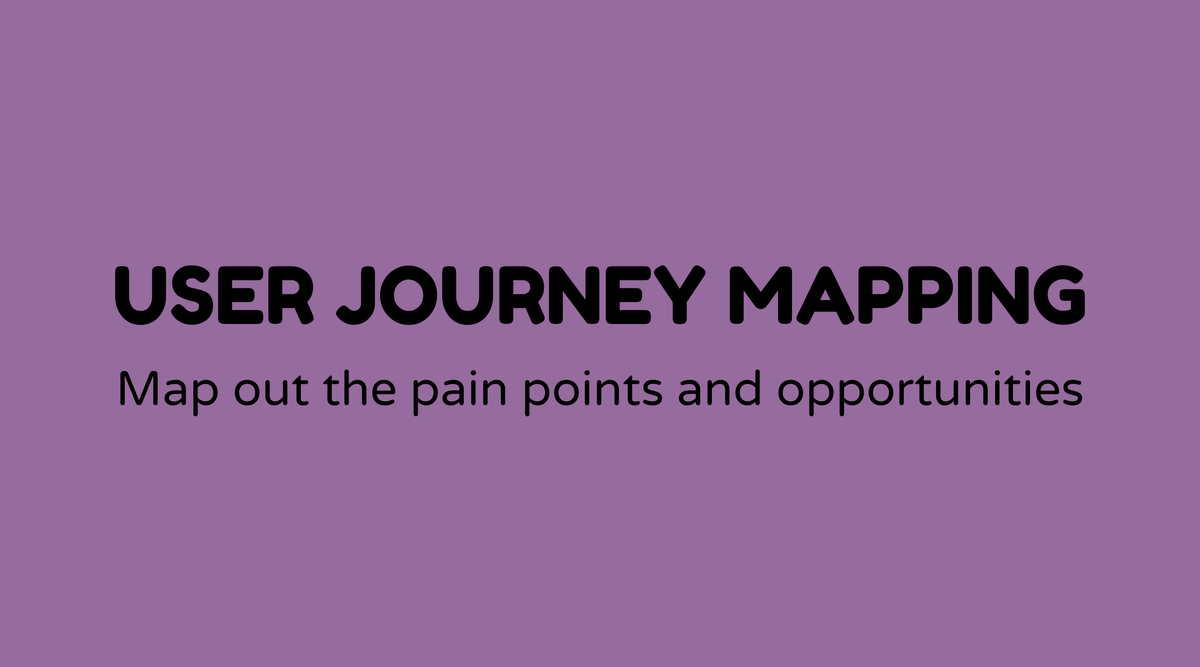User Journey Mapping

Overview of User Journey Mapping:
To create outstanding user experiences, understanding the route a user follows is essential. This is where User Journey Mapping becomes beneficial. It is a visual approach that enables teams to observe the user’s progress from beginning to end across various interactions with a product or service.
By developing a thorough user journey map, companies can pinpoint obstacles, alleviate issues, and improve user contentment. It's akin to having a guide that leads to an ideal user experience.
Why User Journey Mapping Matters:
Why is this valuable? Simply put, it allows teams to adopt the user's perspective and perceive their world more effectively. It highlights routine interactions and reveals insights about user motivations, needs, and feelings.
Investing in user journey mapping allows businesses to enhance their design and development initiatives. It focuses on delivering a smooth and appealing experience that encourages user loyalty.
What is User Journey Mapping:
What exactly is a User Journey Map? It is a visual depiction of a user's encounters with a brand, from the initial interaction to the final outcome. This can include everything from discovering a product to ultimately becoming a loyal client.
By outlining this path, stakeholders can visualize the customer experience and identify areas for enhancement. User journey maps generally consist of personas, timelines, touchpoints, and emotional indicators, enabling a comprehensive analysis of each stage of the user experience.
How do you do User Journey Mapping:
Creating a user journey map is straightforward, but it does call for a systematic approach. Here’s a step-by-step guide:
- Define the Scope: Start by identifying which segment of the user experience the map should address. This could focus on a specific product or a broader brand interaction.
- Gather Data: Collect both qualitative and quantitative data from user surveys, feedback, and analytics. Understand what users do, think, feel, and want at each phase.
- Create User Personas: Utilize the data to develop personas that represent your user base, facilitating empathy towards their requirements.
- Identify Touchpoints: Map all the interactions a user has with your brand across various platforms.
- Understand User Goals: Clarify what users hope to achieve during each interaction.
- Map the Journey: Leverage the data to craft a visual map that illustrates the user’s journey from beginning to end.
- Analyze and Iterate: Look for challenges and areas where improvements can be made. Regularly refresh and refine the map based on new insights.
Sample Agenda of User Journey Mapping Workshop:
- Introduction to User Journey Mapping (15 mins)
- Brief overview of goals and processes.
- Define Scope and Objectives (30 mins)
- Identify key objectives for the user journey map.
- Persona Development (45 mins)
- Develop user personas based on collected data.
- Touchpoints and Goals Identification (1 hour)
- List all interactions and user goals.
- Mapping the User Journey (1.5 hours)
- Create a detailed journey map.
- Analysis and Discussion (1 hour)
- Discuss insights, pain points, and opportunities.
- Closing and Next Steps (15 mins)
- Outline actionable next steps and schedule follow-ups.
Examples of User Journey Mapping:
- E-commerce Platform: Mapping the journey from site entry to checkout, optimizing the user experience by streamlining navigation and purchasing processes.
- Healthcare Services: Analyzing a patient’s experience from booking an appointment to post-consultation follow-up, improving service delivery.
- Mobile App Development: Tracing a user’s path from download to consistent usage, refining app features and usability for higher engagement.
FAQs
How often should a user journey map be updated?
User journey maps should be reviewed and refreshed regularly, ideally every few months or whenever there's a notable change in service or customer behavior.
Can small companies benefit from user journey mapping?
Absolutely, small companies can gain valuable insights into user experiences, enabling them to prioritize improvements and allocate resources effectively.
What tools are best for creating user journey maps?
Tools like Smaply, Lucidchart, and Microsoft Visio are popular for their user-friendly interfaces and collaborative features.
How in-depth should a user journey map be?
It should be detailed enough to provide valuable insights but not overly complex to the point of being hard to manage.
Is user journey mapping limited to digital products?
No, it can be applied to any customer experience, whether digital or physical, allowing organizations to enhance every aspect of user interaction.
What's the most challenging part of creating a user journey map?
Gathering accurate and thorough user data can be challenging, but it’s essential to ensure the map reflects the genuine user experience.



